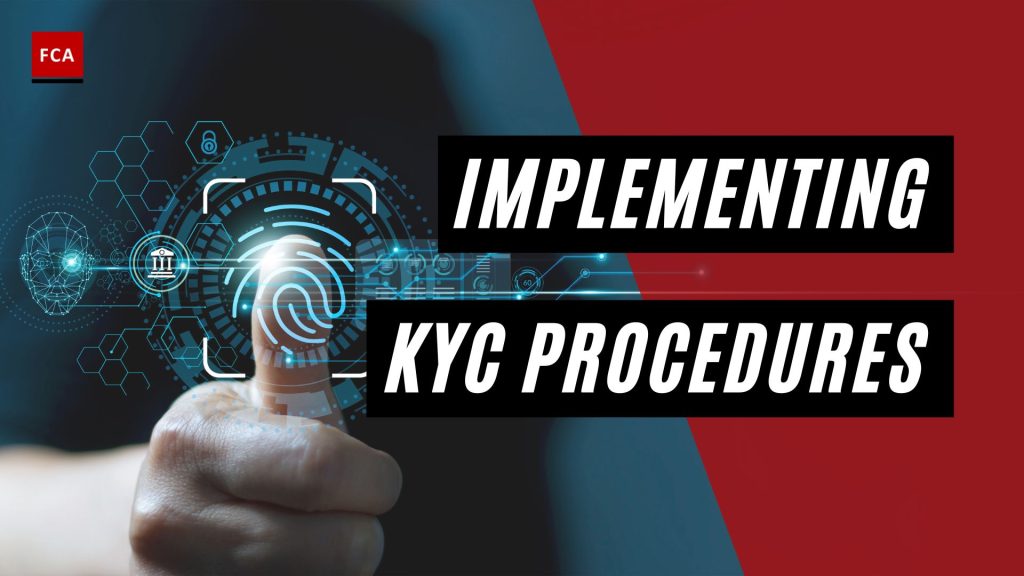Implementing KYC procedures in a comprehensive and effective manner is instrumental in fostering trust, protecting financial institutions from potential risks, and promoting a safer, more transparent business environment.
Know Your Customer (KYC) is part of the customer due diligence (CDD) measures, which enables cryptocurrency exchanges or institutions to know the credentials and background of the prospective customer.
Cryptocurrency exchanges or institutions are required to perform the KYC process before onboarding the customer and update the KYC later on in different stages, such as during the process of periodic compliance reviews or investigations.

Understanding and Implementing KYC Procedures
The KYC process protects an organization from being used for money laundering or terrorist financing activities, which may be performed by the customer, after getting onboarded by the organization, such as a financial institution. KYC enables the organization to avoid the risk of onboarding the criminals such as money launderers or persons associated with criminals in any manner.
Onboarding the criminals causes the entity to face reputational losses and imposition of penalties from the regulator. The KYC process is a mandatory process that is followed at the time when the customer contacts the organization either physically or through online portals, for opening an account, or provision of any services.
A customer relationship or business relationship is defined as being formed when two or more parties engage to conduct regular business or to perform a ‘one-off’ transaction. The term ’business relationship’ applies where a professional, commercial relationship will exist with an expectation by the firm that it will have an element of duration. The application of CDD is required when a firm covered by money laundering regulations ‘enters into a business relationship’ with a customer or a potential customer.
KYC process is also performed when the customer or walk-in customer conducts a random transaction, or international wire transfer, when there is a suspect of money laundering, or when there is a doubt regarding the accuracy of previously collected consumer identity data or information.
Organizations develop the KYC policy which is approved by the Board of Directors and implemented down the line for compliance purposes. KYC policy serves as part of the overall Compliance Program of the organization, the purpose of which is to ensure that the organization takes appropriate measures, to prevent the onboarding of unknown customers or persons, from any jurisdiction.

The KYC process usually is a detailed process that may use technology to combat financial crimes such as money laundering, fraud, and related scams. KYC procedures help better understand prospective customers and their intentions for opening an account with the organization. KYC regulatory requirements apply to various types of organizations which include banks, money service businesses (MSBs), Payment Gateways, Remittance Businesses, Rea Estate Agents, Dealers of precious stones, etc.
The KYC regulatory requirements help in detecting the risk of suspicious intentions and transactions at a very early stage which may be the stage before actually onboarding the customer and providing the services. KYC is the procedure of customer identification and verifying that they are who they claim to be. This involves understanding a customer’s identity, financial activity, and the risk they face.
In the broader sense, the KYC process includes the following:
- Client’s identification using initial documents, provided by the customer.
- Identifying the true beneficial owner of the customer and taking appropriate measures to verify his or her identification. If the beneficial owner is a legal person, trust, company, foundation, or similar legal arrangement the organizations are required to take reasonable measures to understand the ownership and control structure of that legal person, trust, company, foundation, or similar legal arrangement.
- Understanding the objective of opening the account or establishing the relationship
Identification and verification of the client and true beneficial owner is part of the Board-approved KYC policy. Identity verification of the prospective customer should be appropriate and reasonable to meet the applicable regulatory requirements. The purpose is to onboard only identified and verified customers. Verification of the information of the customer is also performed by utilizing the information from independent sources such as media news, websites, and other readily available public information.

Final Thoughts
As we navigate the dynamic and intricate world of cryptocurrencies and financial services, Know Your Customer (KYC) and Customer Due Diligence (CDD) processes have never been more crucial. These stringent protocols are key in protecting organizations from being unwitting accomplices in financial crimes such as money laundering or terrorist financing. The KYC process, although seemingly complex, is paramount to maintaining an organization’s reputation and financial stability. It also contributes significantly to the global fight against illicit financial activities.
Ultimately, a well-executed and robust KYC policy, approved by the Board of Directors, not only ensures regulatory compliance but also serves as a crucial pillar of the organization’s overall Compliance Program. This fosters a transparent and accountable environment that bolsters trust with customers and regulators alike, setting the stage for enduring and beneficial business relationships.








